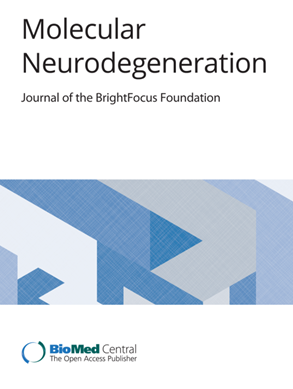A stress-dependent TDP-43 SUMOylation program preserves neuronal function
IF 14.9
1区 医学
Q1 NEUROSCIENCES
引用次数: 0
Abstract
Amyotrophic Lateral Sclerosis (ALS) and Frontotemporal Dementia (FTD) are overwhelmingly linked to TDP-43 dysfunction. Mutations in TDP-43 are rare, indicating that the progressive accumulation of exogenous factors – such as cellular stressors – converge on TDP-43 to play a key role in disease pathogenesis. Post translational modifications such as SUMOylation play essential roles in response to such exogenous stressors. We therefore set out to understand how SUMOylation may regulate TDP-43 in health and disease. We find that TDP-43 is regulated dynamically via SUMOylation in response to cellular stressors. When this process is blocked in vivo, we note age-dependent TDP-43 pathology and sex-specific behavioral deficits linking TDP-43 SUMOylation with aging and disease. We further find that SUMOylation is correlated with human aging and disease states. Collectively, this work presents TDP-43 SUMOylation as an early physiological response to cellular stress, disruption of which may confer a risk for TDP-43 proteinopathy.应激依赖性TDP-43 summoylation程序保留神经元功能
肌萎缩侧索硬化症(ALS)和额颞叶痴呆(FTD)与TDP-43功能障碍密切相关。TDP-43的突变是罕见的,这表明外源因素(如细胞应激源)的渐进式积累聚集在TDP-43上,在疾病发病机制中发挥关键作用。翻译后修饰如sumo酰化在应对这些外源性应激源中起着重要作用。因此,我们开始了解summoylation如何在健康和疾病中调节TDP-43。我们发现TDP-43在响应细胞应激源时通过SUMOylation动态调节。当这一过程在体内被阻断时,我们注意到年龄依赖性TDP-43病理和性别特异性行为缺陷将TDP-43 summoylation与衰老和疾病联系起来。我们进一步发现SUMOylation与人类衰老和疾病状态相关。总的来说,这项工作表明TDP-43 summoylation是对细胞应激的早期生理反应,其破坏可能会导致TDP-43蛋白病变的风险。
本文章由计算机程序翻译,如有差异,请以英文原文为准。
求助全文
约1分钟内获得全文
求助全文
来源期刊

Molecular Neurodegeneration
医学-神经科学
CiteScore
23.00
自引率
4.60%
发文量
78
审稿时长
6-12 weeks
期刊介绍:
Molecular Neurodegeneration, an open-access, peer-reviewed journal, comprehensively covers neurodegeneration research at the molecular and cellular levels.
Neurodegenerative diseases, such as Alzheimer's, Parkinson's, Huntington's, and prion diseases, fall under its purview. These disorders, often linked to advanced aging and characterized by varying degrees of dementia, pose a significant public health concern with the growing aging population. Recent strides in understanding the molecular and cellular mechanisms of these neurodegenerative disorders offer valuable insights into their pathogenesis.
 求助内容:
求助内容: 应助结果提醒方式:
应助结果提醒方式:


